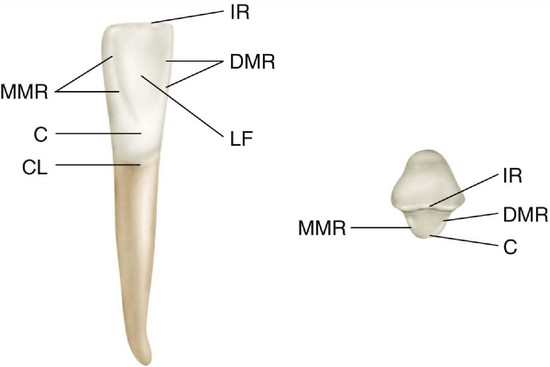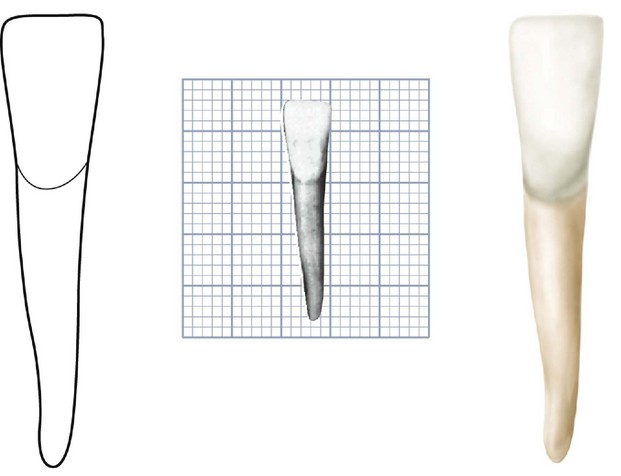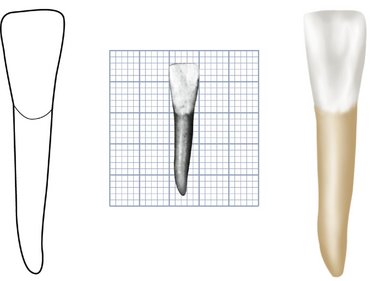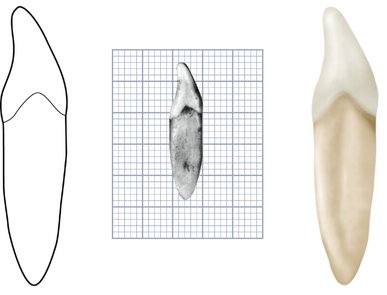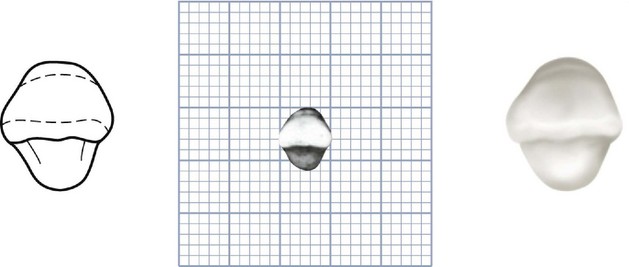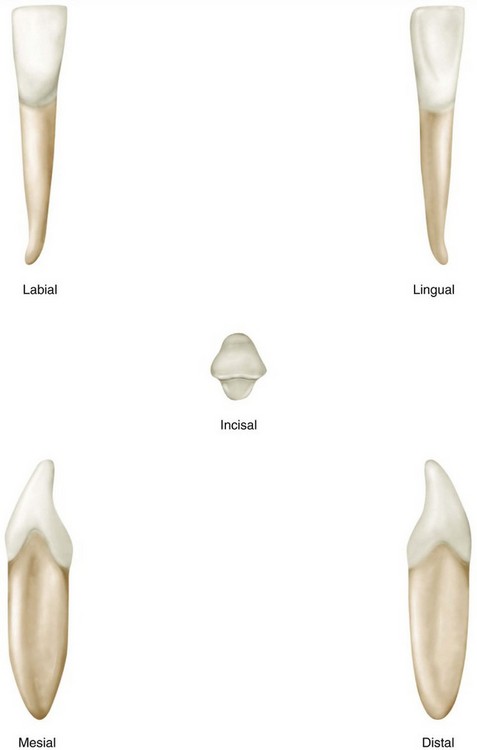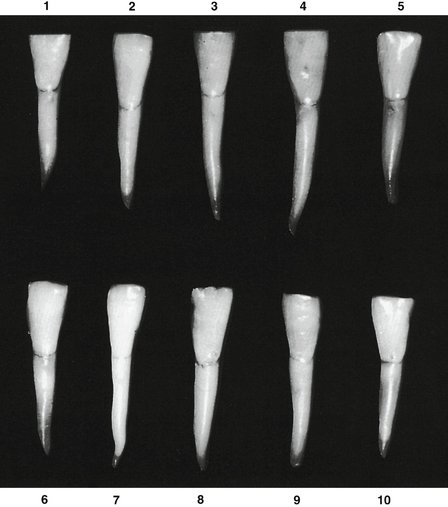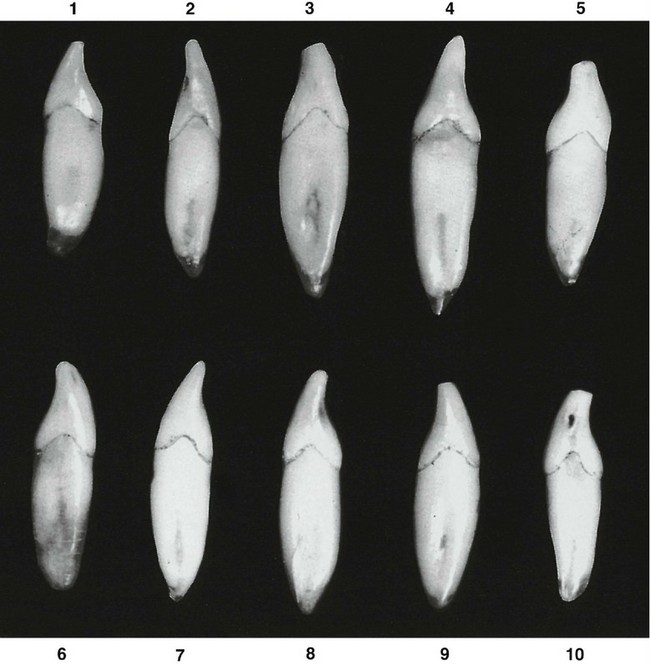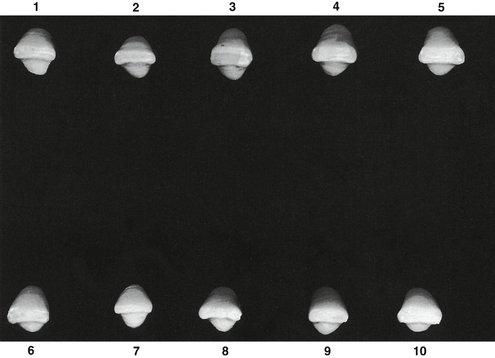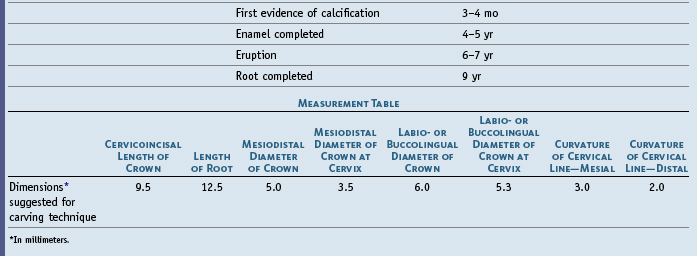7 The Permanent Mandibular Incisors
These teeth are similar in form and have smooth crown surfaces that show few traces of developmental lines. Mamelons on the incisal ridges are worn off soon after eruption, if the occlusion is normal, which leaves the incisal ridges smooth and straight (compare Figure 7-9, 7 and 8). The contact areas are near the incisal ridges mesially and distally, and lines drawn through the contact areas are near the same level on both central and lateral incisors; here also the situation is unlike that of the maxillary incisors. The mandibular incisors show uniform development, with few instances of malformations or anomalies (see Figure 7-12).1,2
Mandibular Central Incisor
Figures 7-1 through 7-12 illustrate the mandibular central incisor in various aspects. Generally, the mandibular central incisor is the smallest tooth in the dental arches (Table 7-1). The crown has little more than half the mesiodistal diameter of the maxillary central incisor; however, the labiolingual diameter is only about 1 mm less. The lines of greatest masticatory stress are brought to bear on the mandibular incisors in a labiolingual direction, which makes this reinforcement necessary.
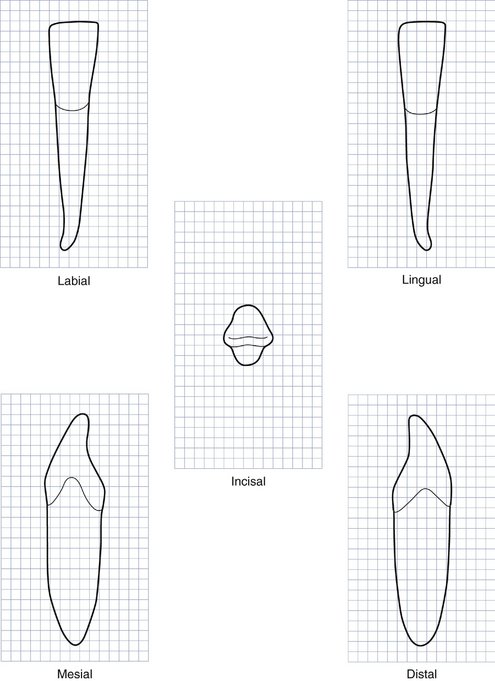
Figure 7-7 Mandibular right central incisor. Graph outlines of five aspects are shown. (Grid = 1 sq mm.)
Stay updated, free dental videos. Join our Telegram channel

VIDEdental - Online dental courses


